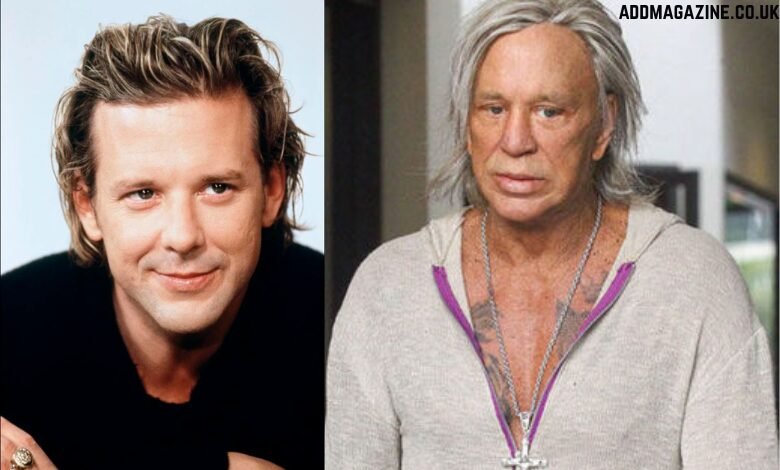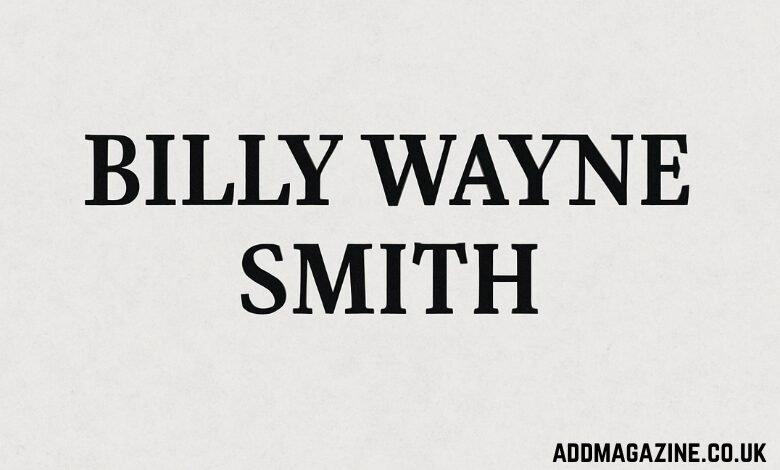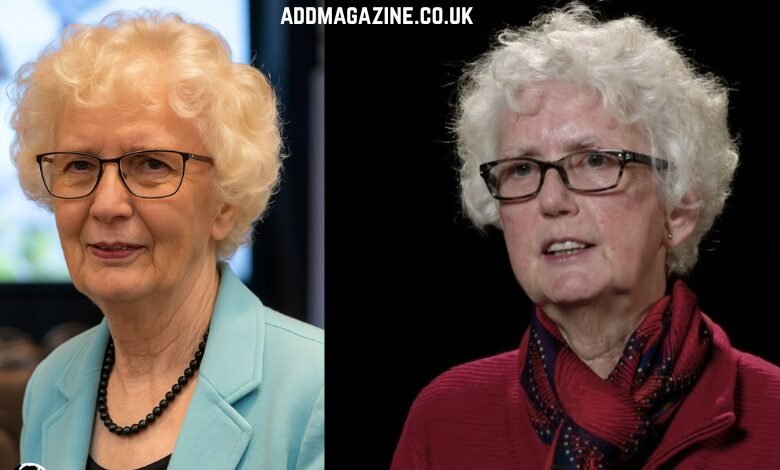Mickey Rourke, one of Hollywood’s most enigmatic actors, gained recognition in the 1980s for his strikingly intense performances and rugged charm. As a young man, Rourke captured the hearts of audiences with his raw talent and undeniable screen presence, becoming a staple in Hollywood during the decade. However, it wasn’t just his acting that garnered attention—Rourke’s physical transformation over the years has been the subject of much speculation and scrutiny. This article takes a closer look at Mickey Rourke’s journey from a promising young actor to the complex and well-known figure he is today.
Early Life and Entry into Acting
Born Philip Andre Rourke Jr. on September 16, 1952, in Schenectady, New York, Mickey Rourke’s early life was far from glamorous. Raised in a working-class family, Rourke’s parents divorced when he was young. His relationship with his father was strained, leading him to seek solace in sports and, later, acting. His time as a teenager was marked by a passion for boxing, which would later play a significant role in his life and career. However, Rourke eventually pivoted from sports to acting, a decision that would take him to the heart of Hollywood.
Rourke’s first break came when he was cast in small television roles. His early appearances were unremarkable, but he was soon noticed for his striking features and talent. His big break came in 1981 when he was cast in the film Body Heat, starring opposite Kathleen Turner. While his role was small, it introduced Rourke to the movie industry and paved the way for his future success.
Rise to Fame in the 1980s
Rourke’s real breakthrough came in the 1980s, a decade that would cement his reputation as one of Hollywood’s most intriguing young stars. His rise to fame can be attributed to his roles in films like 9½ Weeks (1986), Angel Heart (1987), and Barfly (1987), all of which showcased his ability to portray complex, brooding characters. These roles catapulted Rourke to international fame, with his intense performances becoming the hallmark of his early career.
In 9½ Weeks, Rourke starred alongside Kim Basinger in a provocative and steamy romance. The film was a commercial success and cemented his status as a heartthrob of the 1980s. His portrayal of a dark and mysterious lover captured the essence of the decade’s desire for both physical attraction and emotional complexity. Similarly, Angel Heart proved to be another pivotal role, where Rourke’s portrayal of Harry Angel, a private investigator entangled in a surreal and terrifying plot, showcased his versatility as an actor.
Despite the commercial success and growing recognition, Rourke’s off-screen behavior and reputation for being difficult to work with became a point of contention. His rebellious nature, combined with his strong-willed approach to acting, meant that he often clashed with directors and producers. Rourke’s star power was undeniable, but his rising fame was not without its challenges.
The Transition to Boxing and Its Impact
In the early 1990s, Mickey Rourke made a drastic decision that would have long-lasting consequences: he chose to step away from acting to pursue a career in boxing. Rourke had always been passionate about the sport, and he believed that boxing could provide the discipline and focus that his acting career lacked. At the time, his decision shocked many, as Rourke was on the verge of becoming a major Hollywood star.
Rourke’s decision to box was not a passing whim but a serious commitment. He trained intensively, even undergoing matches in the professional boxing ring. His boxing career was marked by an aggressive style and a determination to succeed. Unfortunately, Rourke’s time in the ring was marred by several serious injuries. During his boxing career, he sustained a variety of injuries, including facial fractures and a damaged nose, injuries that would later require multiple surgeries.
It is believed that Rourke’s extensive boxing injuries played a significant role in his decision to return to Hollywood. After several years of boxing, he found himself at a crossroads in both his career and personal life. His injuries, combined with the disillusionment he felt with the sport, led him to reconsider acting.
The Physical Transformation and Controversies
Injuries from Boxing and the Need for Surgery
Mickey Rourke’s return to acting in the late 1990s and 2000s was accompanied by a significant physical transformation, largely due to the lasting effects of injuries sustained during his boxing career. Rourke has been open about the numerous reconstructive surgeries he underwent to repair the damage caused by his time in the ring. In an interview with The Daily Mail in 2009, Rourke revealed the extent of these surgeries, explaining that most of them were necessary to fix his facial injuries.
“I had my nose broken twice. Rourke mentioned, “I underwent five surgeries on my nose and another one to repair a broken cheekbone.” “I had to have cartilage taken from my ear to rebuild my nose.” The surgeries, he explained, were extremely painful, especially those focused on repairing his nose and the scarring that followed. Rourke also mentioned that his choice of surgeons led to some complications, contributing to further challenges in his recovery.
Cosmetic Surgery and Public Speculation
Beyond the reconstructive procedures, Mickey Rourke’s decision to undergo cosmetic surgery further fueled media speculation about his appearance. He admitted to undergoing additional facial surgeries, including a controversial cheek implant procedure. It was reported that the implants were done to help him land a role in the 1990 film Wild Orchid. Rourke’s ongoing relationship with cosmetic surgery became more public in 2017 when he shared a photo on Instagram with his surgeon after undergoing a nose surgery, igniting further rumors about his appearance.
As Rourke’s appearance continued to evolve, speculation surrounding the number of surgeries he had undergone reached new heights. Fans and critics alike debated how much of his transformation was the result of cosmetic enhancements, with some experts suggesting that Rourke had undergone more procedures than he had openly admitted. While he has acknowledged the impact of his boxing injuries on his appearance, it remains unclear how much of his transformation was driven by his pursuit of an ideal image in Hollywood.
Career Resurgence in the 2000s
Despite the physical changes, Mickey Rourke managed to experience a resurgence in his acting career in the 2000s. His comeback was highlighted by his critically acclaimed performance in The Wrestler (2008), directed by Darren Aronofsky. In this film, Rourke played Randy “The Ram” Robinson, an aging professional wrestler struggling with physical pain and emotional distress. The film was a huge success, earning Rourke widespread recognition and several awards, including a Golden Globe for Best Actor.
Rourke’s performance in The Wrestler was hailed as one of the finest of his career. It was a raw, emotionally charged performance that showcased his ability to channel his real-life struggles into a compelling portrayal. In many ways, The Wrestler was a reflection of Rourke’s own life, with his character mirroring the pain and disillusionment that Rourke had faced in both his career and personal life.
Following the success of The Wrestler, Rourke was able to land roles in other notable films, including Iron Man 2 (2010) and The Expendables (2010), proving that despite his physical changes and past controversies, he still had the talent and charisma to succeed in Hollywood.
The Legacy of Mickey Rourke’s Young Years
Looking back at Mickey Rourke’s career, it is clear that his journey has been anything but conventional. From his early years as a rising star in Hollywood to his decision to pursue boxing and subsequent physical transformation, Rourke’s story is one of both triumph and struggle. While his appearance has changed drastically over the years, his talent and legacy in the entertainment industry remain undeniable.
In many ways, Mickey Rourke’s journey reflects the complexities of fame and the toll that it can take on a person’s body and mind. His story serves as a reminder that behind the glitz and glamour of Hollywood, actors are often faced with personal challenges that shape their careers and lives in ways that the public may never fully understand.
As Mickey Rourke continues to navigate the world of celebrity and entertainment, his younger years will remain a defining chapter in his legacy, one that is characterized by talent, tenacity, and the willingness to take risks—both in his career and in his personal life.
Conclusion
Mickey Rourke’s journey through Hollywood in his younger years remains an iconic story of both triumph and tragedy. From his rise as a heartthrob in the 1980s with roles in 9½ Weeks and Angel Heart to his controversial transition into boxing, Rourke’s career was always unpredictable. His physical transformation, largely due to boxing injuries and surgeries, became as much a part of his legacy as his acting talent. Despite the struggles and changes he faced, Rourke’s early years in Hollywood remain a testament to his raw talent and rebellious spirit.
Today, Mickey Rourke’s young persona is immortalized in his groundbreaking roles and the legacy he left behind. Though his appearance has changed, his influence on Hollywood and the film industry endures. His story reflects the complexities of fame, the physical and emotional tolls that come with it, and the resilience required to overcome personal challenges. Mickey Rourke’s evolution from a young, daring actor to a seasoned veteran shows that talent, regardless of external changes, continues to shine through the passage of time.



